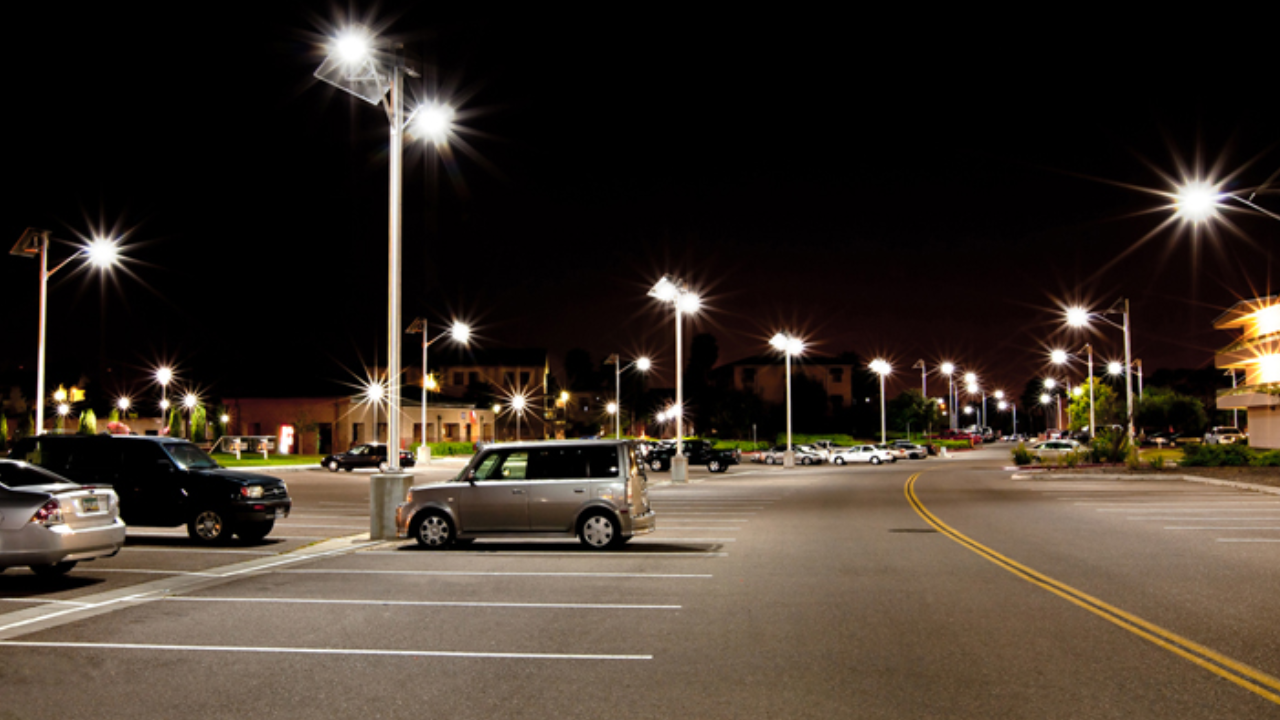Outdoor lighting plays a critical role in enhancing safety, visibility, and aesthetics in various urban and commercial environments. Two prominent lighting distribution patterns, Type VI and Type III, have emerged as pivotal solutions for distinct applications. Type VI distribution, is characterized by its symmetrical circular pattern, and is designed to uniformly illuminate expansive open spaces like parking lots and plazas.
In contrast, Type III distribution features an asymmetrical pattern focused primarily in a lateral direction, making it ideal for illuminating roadways and pathways with a rectangular layout. As the industry embraces more energy-efficient, customizable, and environmentally friendly solutions, the interplay between TYPE VI, Type III distributions, and cutting-edge lighting technologies continues to shape the landscape of outdoor illumination.
Type VI and Type III Lighting Distributions as Guardians against Light Pollution
In the quest for efficient and responsible outdoor lighting, Type VI and Type III lighting distributions emerge as stalwart defenders against the pervasive issue of light pollution. This detailed article explores how these specific lighting distributions play a pivotal role in minimizing light pollution, preserving the sanctity of the night sky, and creating a balanced, environmentally conscious illumination in our urban and suburban landscapes.
Contributions of Type VI to Reducing Light Pollution
Reduced Light Trespass
Type VI lighting distribution greatly reduces light trespass by focusing light more narrowly and precisely. This design minimizes light spillage beyond the designated region, preventing it from entering neighboring properties or the night sky. The forward-throw design of Type VI fixtures directs light precisely where it is required, reducing disturbances and lessening the incidence of light pollution.
Enhanced Control
Type VI lighting distribution provides greater control over the direction and spread of light. The forward-throw pattern enables precision illumination aiming, preventing unwanted upward or outward light dispersion. This increased control reduces light spillage beyond the intended locations, dramatically decreasing light pollution and generating a more ecologically friendly and visually comfortable lighting environment.
Minimized Glare
Type VI lighting distribution is intended to reduce glare by ensuring that emitted light is focused and directed without creating pain or visual disturbance. This reduction in glare makes a significant contribution to attempts to reduce light pollution. Type VI fixtures help to provide a more visually comfortable and ecologically sustainable outdoor lighting environment by providing focused illumination with reduced glare.
Focused Entrance Illumination
Type VI lighting distribution excels at delivering focused entrance illumination, increasing safety and visibility while not overly illuminating the adjacent surroundings or night sky. Type VI fixtures help to reduce light pollution by concentrating light where it is needed, such as at parking lot entrances or perimeters, and minimizing superfluous brightness in non-targeted zones.
Contributions of Type III to Reducing Light Pollution
Uniform Illumination
Type III lighting distribution contributes significantly to decreasing light pollution by providing uniform illumination. This distribution design offers consistent brightness over a large area while avoiding very bright spots. Type III fixtures minimize light level changes, reducing the possibility of creating disruptive contrasts or shadows and encouraging a visually harmonious and environmentally friendly lighting environment that reduces the influence of light pollution.
Minimized Shadows
Type III lighting distribution reduces light pollution by minimizing shadows. The design ensures equal illumination throughout the room, improving visibility and safety while avoiding harsh contrasts or regions of darkness. Type III fixtures help create a visually attractive outdoor environment by distributing light in a balanced and consistent manner, substantially reducing the possibility of light pollution.
Strategic Fixture Placement
Type III lighting distribution contributes to decreasing light pollution through judicious fixture placement. Type III distribution reduces the possibility of light spilling into undesirable areas by positioning fixtures in such a way that they ideally illuminate vast areas without excessive over-illumination. This intelligent arrangement improves illumination efficiency, enabling a balanced and environmentally friendly lighting environment while mitigating the impact of light pollution.
Versatility in Applications
Type III lighting distribution's versatility contributes to reducing light pollution by adapting to various outdoor applications. While commonly used in parking lots, its wide and uniform spread of light makes it suitable for diverse environments. Whether illuminating roadways, streets, or pedestrian pathways, Type III fixtures provide consistent and balanced illumination, minimizing the potential for unnecessary brightness and contributing to a more environmentally friendly lighting solution.
Final Words
Both Type VI and Type III lighting distributions protect against light pollution, with each bringing its strengths to the cause. These distributions are critical in constructing outdoor spaces that combine human requirements with the protection of the natural night sky. As technology progresses and lighting design evolves, a continuing commitment to ethical lighting practices will help limit the effects of light pollution.

